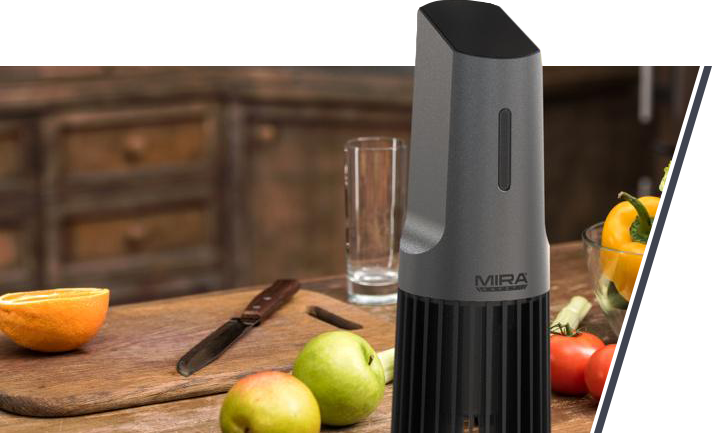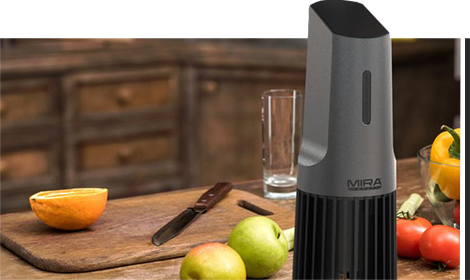You can find it in the soil, in the water, and even in the air we breathe.
Extensive studies conducted by environmental experts show that 300 million people suffer from arsenic poisoning, with 13 million affected right here in the United States.
Arsenic is a known toxin. It is also exceedingly difficult to trace the long-term effects of arsenic poisoning among smaller communities, let alone our entire global population.
Perhaps, if arsenic is everywhere, it isn’t all that bad. I mean, is there a problem with a little bit of arsenic in our water?
Yes. It’s a serious problem.
In this article, we’ll go over the history and relationship between arsenic and the world as we know it.
Table of Contents
-
01
Arsenic: The King of Poisons
-
02
Poison With a Purpose
-
03
A Threat to Humanity
-
04
How Do We Protect Ourselves?
-
05
Conclusion
Arsenic: The King of Poisons
Arsenic is as fascinating as it is frightening.

It is naturally occurring and forms compounds with organic and inorganic substances. In Arsenic, Metals, Fibres and Dusts, the National Center for Biotechnology Information identified arsenic as "the 20th most common element in the earth's crust, and it is emitted throughout the environment as a result of volcanic and industrial activities."
Arsenic compounds exist in soils, sediments, and, perhaps most alarming, our groundwater. These compounds occur naturally or as a result of mining, ore smelting, or even industrial use.

(Image source: Image courtesy of Ohio State University)
In the past, people suffered all manner of sicknesses from unknown sources. But now we know the cause of those illnesses —long-term arsenic consumption.
Laws are already in place to to restrict arsenic-based pesticides, wood preservatives, and medicines. But why just restrict it … why not ban this poison from production altogether? I will answer that question a little later in this article. But first we need to talk about “organic arsenic.”
We associate "organic" with ideas and concepts such as "clean, healthy, and natural." In one of my past articles, I delved into the mythos and marketing that have made this such a powerful word for consumers..
In this context, it means that arsenic has been compounded with organic material or, to be more specific, sea life.This isn’t the only source of organic arsenic, but research has found the primary hosts are fish and shellfish.

(Image source: Image courtesy of The News Minute)
These creatures are regularly steeped and subsisting in arsenic-contaminated waters, which they absorb and accumulate over time.
Studies have found organic arsenic to be "mostly harmless," which is "mostly true." Of course, too much of any one thing can be disastrous for your health. I won't dissuade anyone from enjoying a nice seafood dinner. But trace levels of arsenic are often there.
And that’s not the only place you’ll find arsenic in your everyday diet …
It’s also likely to be present in your water supply.
Poison With a Purpose
Arsenic is a poison. There’s no mistaking that fact.
The arsenic you’ve probably already heard of—described in books, television and film—is arsenic trioxide. It’s a highly favored poison as it is odorless, easily incorporated into food and drink, and untraceable in the body.
Assassins, monarchical tyrants, and even domestic partners have used arsenic in its many forms to kill unsuspecting victims.

(Image source: Image courtesy of Jordan Patrzalek)
Arsenic trioxide is a form of inorganic arsenic. And Inorganic arsenic has seen recorded use by countless cultures throughout history, be it as a poison or otherwise.
The noble Borgia family of the 15th century most famously utilized arsenic to poison their opponents. Arsenic was the Borgia family's primary weapon against political rivals, enemies, and about anyone they considered a threat to their power. During the Renaissance, people accused the Borgia family of poisoning their guests' wine while discussing politics and business matters.

(Image source: Image courtesy of IMDB)
Due to undetectable symptoms, the Borgia family was mainly safe from conviction, despite countless accusations.
The expression "the gift of the Borgias" accompanied their rise and fall from grace, reflecting the sarcastic wit of some unknown historian. As a side note, the German word "gift" translates as “poison or malice.” Would-be comedians of the past had a decidedly dark sense of humor.
The impossibility of tracing arsenic is what made it such an effective weapon for assassins. It wasn't until the advent of the Marsh test (named after chemist James Marsh who developed it) in 1836 that we could detect arsenic reliably.
Even the most subtle traces are identifiable thanks to arsenic's propensity toward compounding with other materials. Without turning this into a chemistry lesson, the test allows us to separate the arsenic with sulfuric acid and then rebind it to arsenic-free zinc.
Arsenic is a poison, but it also has uses beyond that fatal niche.
Arsenic in Art
Inorganic arsenic has been used in a wide variety of paints, products and artistic embellishments that date all the way back to the time of ancient Egyptians.

(Image source: Image courtesy of Dakota Matrix Minerals)
Most captivating is the use of arsenic as a unique, yellowish-gold pigment produced from arsenic sulfide known as "orpiment." Orpiment pigment would come to be known as "King's Yellow" for its much-desired golden hue in art projects.
You may hear arsenic referred to as the "King of Poison." Whatever you call it, arsenic has had a mixed reputation of fame and infamy throughout human history.
The notably adorned tomb of King Tut has golden trinkets and wall decorations. Archaeologists found orpiment present in some of these wall decorations, signifying its usage as far back as 1300 BC.

Even the Taj Mahal, one of the world's seven wonders, has apparent use of orpiment on its walls. It would continue to be popular in this fashion for over 2,000 years. It wasn't until the 19th century that scientists and artists alike began to see eye to eye, preferring cadmium-based yellows to the toxic arsenic-based color of orpiment.
Since the 13th century, arsenic has been used as a varnish to preserve wood. The popularity of these treatments saw arsenic in its airborne, waterborne, and medicinal form becoming a regular part of everyday life for many people across the globe. When compounded with nearly undetectable side effects of arsenic, it's no wonder life expectancies were so low back then.
Arsenic in Medicine
The poison became an ingredient in a number of different medicinal formulations over the centuries. Despite being linked to cancer, orpiment proved effective in treating cancerous ulcers.

(Image source: Image courtesy of Natural Products INSIDER)
A man named Thomas Fowler developed an arsenic compound called "Fowler's solution." He discovered that controlled levels of arsenic (1% weight per volume) would lower white blood cell counts in healthy individuals, with a more noticeable decrease in cell count for patients with chronic myelogenous leukemia.
Arsenic had finally proven its worth in the medicinal world.
Fowler's solution remained a mainstay in leukemia treatment. However, researchers found an organic arsenic compound that would do the same without any side effects of ingesting inorganic arsenic.

Atoxyl, the medicine derived from arsanilic acid, would be the primary means of treating leukemia patients until radiation treatment became the more obvious and objectively safer alternative.
So, medicinal arsenic is a genuine concept, and it helps to give us context regarding its everyday uses today.
Arsenic in Industry
Arsenic also plays an essential role in industrial production.
This role includes its usage as an alloying agent and processing glass, pigments, textiles, paper, metal adhesives, wood preservatives, and even ammunition for guns.

(Image source: Image courtesy of Arch Timber Protection)
The contemporary industrial practice of treating wood with Tanalith (chromated copper arsenate) only dates back to the 1930s. This process is cleaner than the traditional varnishes and treatments of the past that also utilized arsenical compounds. Safe production of these materials was nearly impossible before the Industrial Revolution.
Most people using arsenic for productive purposes before the 1930s exposed themselves to high concentrations of it, and we know that only because of the Marsh test.
With the help of modern science and caution, we can safely use arsenic, among other dangerous elements. So, that's it. We're safe now.
Well, not quite…
A Threat to Humanity
It may seem like common sense to some, but for the curious mind, concrete answers are as necessary to believing as air is to breathing. Lucky for you, it's answers that we aim to deliver.

(Image source: Image courtesy of InTeGrate)
In the United States alone, levels of arsenic in our groundwater can be as high as 40µg/L. This is four times higher than the recommended limit.
The Centers for Disease Control and Prevention (CDC), the Environmental Protection Agency (EPA), and the World Health Organization (WHO) all agree that consumers should not drink water containing arsenic exceeding 10µg/L. However, bath and laundry water may contain some arsenic without "too much concern."
So, we can study and observe the water to identify the levels of inorganic arsenic within our natural wells and bodies of water. But where does that leave the average citizen?
Well, in most cases, it doesn't change much at all.
Just knowing this, sadly, isn't enough to prevent arsenic from entering our bodies. Like I mentioned, 13 million Americans have afflictions from arsenic in some form. Unfortunately, an astounding 2 to 3 million Americans only have access to arsenic-contaminated water available in their homes.
I myself have been a victim of poorly filtered water. I, and many of my friends and family members, found ourselves susceptible to arsenic poisoning.
A small but densely populated island off the coast of Manhattan is where I was born and raised. Long Island, with upward of 7 million citizens, is the place I call home. Since its founding, my home has suffered from high amounts of arsenic in our water supply.

(Image source: Image courtesy of High Water Standard)
In some of the most recent studies conducted by specialists, we've discovered that natural water wells contain arsenic exceeding the EPA's advised standard of 10µg/L.
The United States Geological Survey studied several wells in my neighborhood and found that most were appropriately filtered, but not all. Suppose even a single well goes untreated due to faulty filtering equipment. It could lead to many cases of long-term arsenic poisoning and several sick individuals.
In all studies conducted independently and by the WHO, scientists have concluded that long-term exposure to arsenic can be associated with cancer. This cancer affects the bladder, lungs, skin, kidneys, nasal passages, liver, and prostate.

(Image source: Image courtesy of Borri Law)
In addition to the threat of cancer, other effects of arsenic poisoning range from cardiovascular issues to pulmonary problems, which can lead to fatal conditions. When looking at how it affects our bodies' natural order, we can expect immunological, neurological, and endocrine-related disorders.
The scariest part about arsenic poisoning?
It's challenging to tell if the effects are from arsenic poisoning or another condition related to outlying factors. By the time you've developed issues related to arsenic poisoning, the damage has occurred. That isn't to say things can't get better (or worse,) only that you won't know before it's too late.
Our inability to detect arsenic poisoning immediately has led our government to work hard on producing filters and other safety measures to mitigate toxins in our drinking water.
Arsenic is a lonely element. It's like a clingy friend that wants to bind itself to all sorts of materials, so it's challenging to isolate it once a body of water is exposed. But arsenic in the water supply is old news at this point. We've known about it, and that's why we, as a society, have taken action against it.
But arsenic in our drinking water can also poison us indirectly.
Because we use the same water to nourish our crops. Since that water is not for direct consumption, it does not fall under the same scrutiny as the wells meant for quenching our thirst.

(Image source: Image courtesy of LongIsland.com)
After the water hits the soil, there's nowhere for that arsenic to go but into the plants. It just so happens that most plants we grow are for human consumption. Go figure.
Arsenic is everywhere, regardless of whether or not we use it to manufacture goods. It erodes from the earth and finds its way into our water supplies.
Naturally, that means it finds its way into our food supplies next. While most animal byproducts are safe from contamination, the food we consider the safest and healthiest could spell disaster for us.
Contaminated Crops
All plant life is susceptible to contamination by arsenic.
Apples, pears, and grapes are great examples due to their ability to absorb inorganic arsenic from the soil they grow in and any potential contamination from water.

(Image source: Image courtesy of Food Safety Science)
Rice is a staple in the majority of global food pantries. It’s a staple dish for billions around the globe. You can find various grains of rice in breakfast, lunch, dinner, and even dessert in some cases.
Rice and rice-based products fall under heavy scrutiny for their arsenic levels, naturally including rice cereal catered toward children and, most precious of all, our babies.
The U.S. House Subcommittee on Economic and Consumer Policy on Oversight and Reform conducted a study in 2021 that tested the most fundamental of foods: baby food. They found that one of the most popular baby food brands, Gerber, had shockingly high levels of toxic metal contamination. Lead, cadmium, mercury, and arsenic were all found to exceed even the company’s standards.

(Image source: Image courtesy of Gerber Life Insurance)
Why weren’t their laws in place to prevent this?
The only U.S. Food and Drug Administration regulation for baby food concerns rice cereals. Even after finding toxic metals in baby food, we’re still lagging in our responsibility to do something about it.
How Do We Protect Ourselves?
When faced with an issue as broad as arsenic in our water supply, it's essential to take preventative measures, both officially and privately.
Activated carbon filters in our water wells can be a useful safety measure. But these filters aren't perfect, and some arsenic is bound to get through the cracks. In these cases, it's important to remember that the burden of protecting your family falls on you, the consumer.
Foods that absorb water more thoroughly are regarded as high-risk factors when discussing the possibilities of arsenic poisoning via consumption. Researchers at Dartmouth University compiled a cheat sheet of ways to prevent consumers from knowingly consuming foods contaminated with arsenic. Being careful includes making informed decisions while recognizing that you can't have everything.
Consumers concerned with contamination should choose foods with a naturally lower propensity towards absorbing arsenic. For example, white rice is lower in arsenic than brown rice. Still, it is also more deficient in fiber and vitamins. Trading out nutrients for safety seems like a fair trade-off but can be detrimental to a balanced diet.

(Image source: Image courtesy of Hungry Pumpkin)
If you're particularly curious, you should check to see where your rice is grown. Looking for rice grown in regions that have rice lower in arsenic is a valid preventative measure. White basmati rice from California, India, Pakistan, and even sushi rice from the U.S., may have less arsenic than other similar rice grains.
Perhaps one of their study's essential bits of advice is to vary your grains, especially if it’s a big part of your diet. Consider adding grains with less arsenic to your diet. Grains such as amaranth, quinoa, bulgur, and farro can help to diversify your palette and mitigate your arsenical intake.
You may be surprised to learn that rice, rice flour, or rice syrup are some of the most common ingredients in the snacks you like to eat. If you find that they are, an easy way to avoid further arsenic consumption would be to try new snack options that don't have rice or rice-based products.

(Image source: Image courtesy of Yummy Toddler Food)
When cooking, you should also be careful with the water you're boiling. The water you use to cook rice should not contain high arsenic levels since rice absorbs water as it cooks. As previously stated, you should never use water that has more than 10µg/L to cook or wash your food. Rinsing your rice before cooking with lots of clean water can also help to reduce the arsenic concentration.
If you're okay with committing cardinal cooking sins, you can cook your rice like you cook your pasta (using six times as much water as rice while cooking and draining the water after) to get rid of about half the arsenic in that rice.
Dartmouth Researchers found that you should be aware of how much arsenic you and your family may consume through food, water, and other sources.

(Image source: Image courtesy of HelpGuide)
If your diet contains a lot of rice or other foods that are higher in arsenic, the most obvious solution is to stop eating them or eat them less often. Varying these food types with foods lower in arsenic should be a part of your routine. A healthy routine is easy to maintain if your diet is equally healthy and balanced.
Instead of changing your whole diet and cooking routine, you could always try the MIRA Safety DTX-1 Oxidizing Food Detoxifier Meat, Fruit, and Vegetable Wash Machine.

The DTX-1 uses a combination of ultrasonic vibrations and active oxygen molecules to shake residue and contaminants free from your food.
Contaminants such as pesticides, bacteria, and elements like … you guessed it: arsenic.
The system uses no detergents, cleaners, or chemicals. Most of the DTX-1's cleaning happens at the microscopic/molecular level, so your food is not unnecessarily agitated, tenderized, or otherwise changed.
Your food will be just as you want it: clean, safe, and ready to eat.
Conclusion
If I had hindsight about arsenic's presence in my everyday life when I was still ingesting it regularly, I'd have taken measures immediately to mitigate that threat.
Today I can make choices that benefit my family and my health.
Society is ever-changing, and our knowledge of the world around us is also changing.
Arsenic remains present in our lives, and it's apparent that it always has been. Despite that fact, however, we're able to adapt and persevere. We can use arsenic to create rather than destroy. Like a wild flame, we can harness it to bring beauty and comfort. Still, left unchecked for too long, it could bring about destruction.
All things in moderation, poison included, can be the difference between a healthy balance and detrimental, long-term effects.
So I ask you to please consider what you're eating tonight. Do the most you can for your own sake and the sake of your family. Don't be afraid to eat rice, but remember … that the "Yellow King" sleeps silently.





